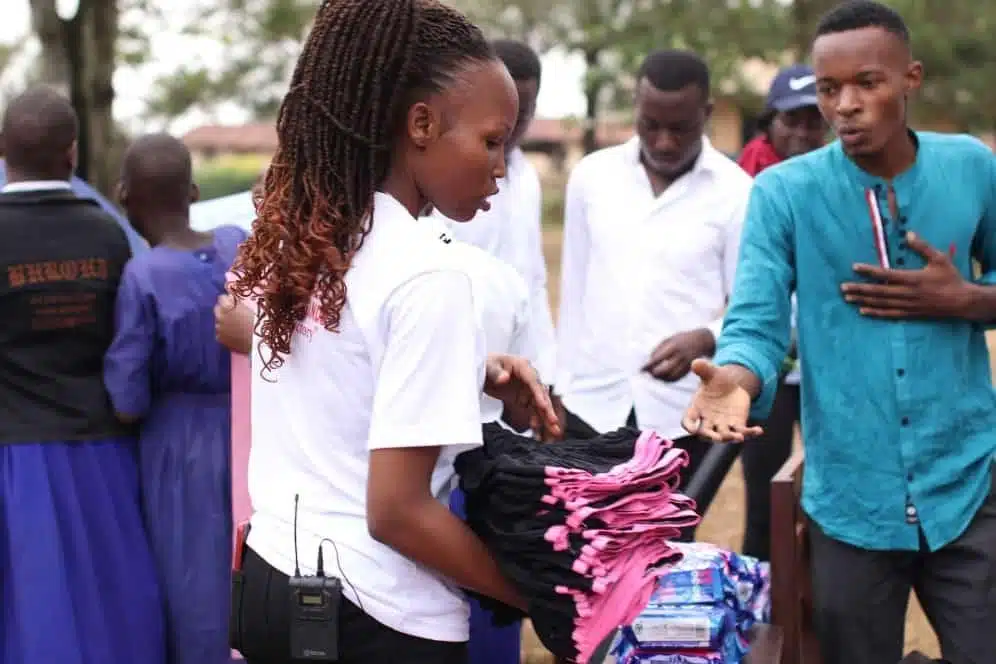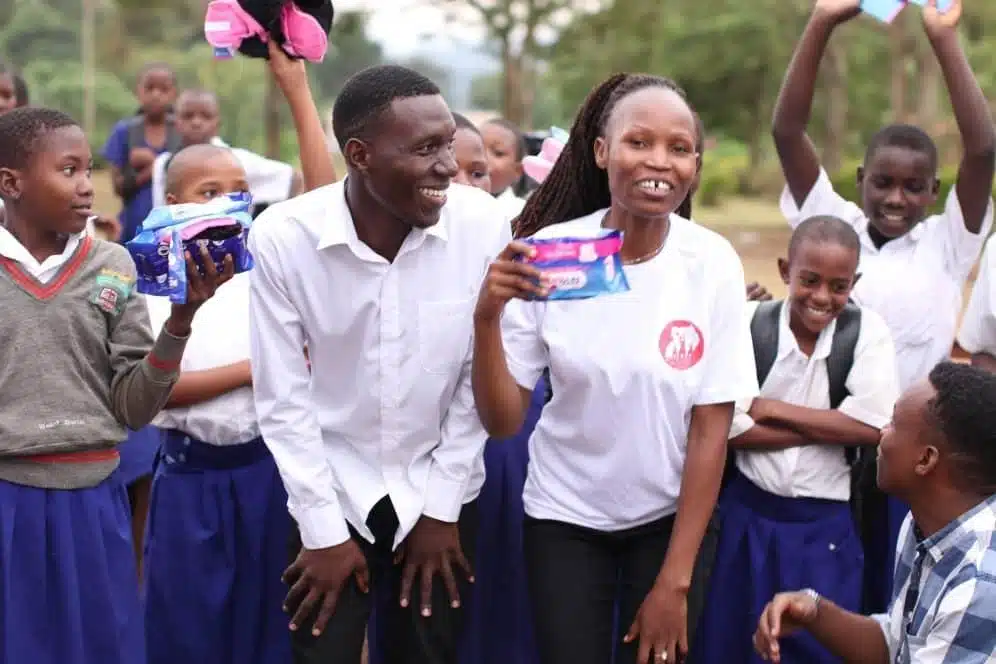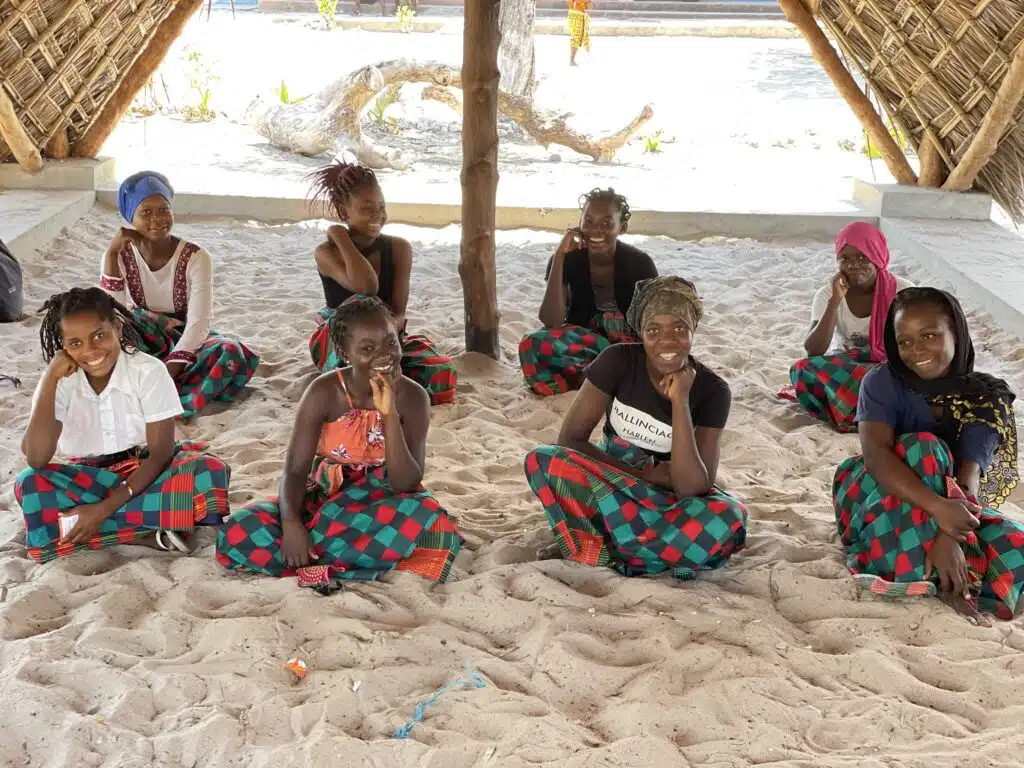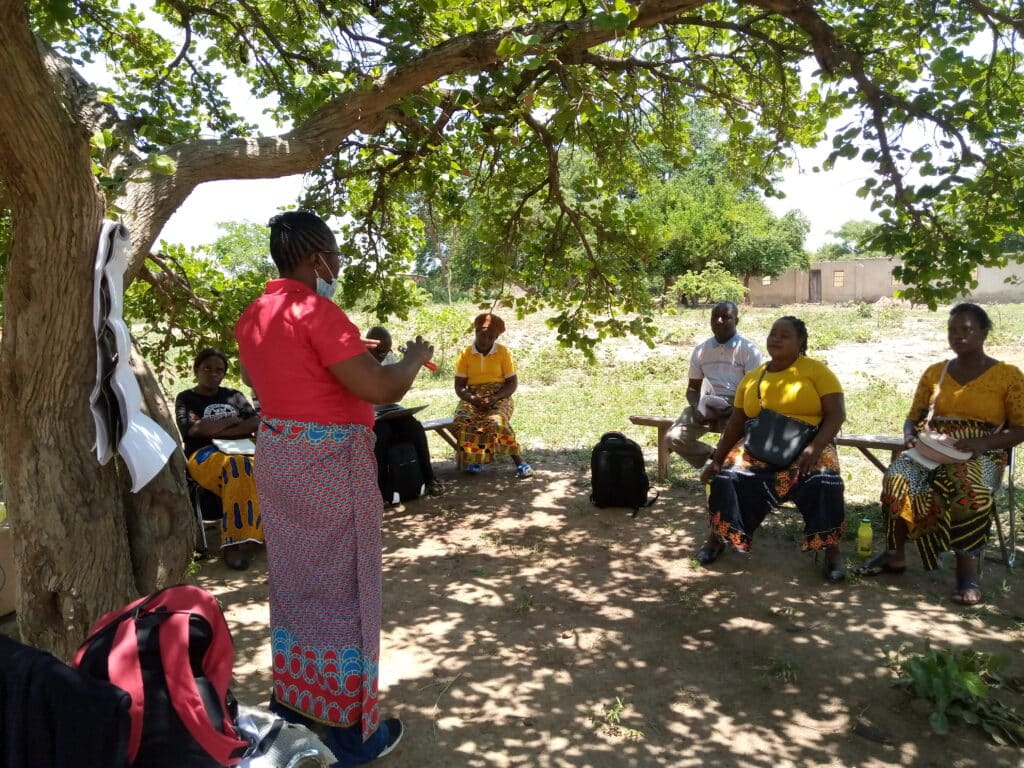Involving men and boys in menstrual knowledge and training activities is an integral part of combating the many factors that contribute to gender inequality.
Gender inequality is the unequal power relations between men and women, resulting in women and girls’ voices not being heard during decision making within households, communities, and development programs, especially when it comes to reproductive health.
The barriers specific to menstruation and menstrual health and hygiene include:
Myths and misconceptions that are the result of cultural taboos and contribute to stigma and shame around menstruation. In many cultures, men and boys believe that menstrual blood and menstruating women are impure or unclean. For example, in some, women and girls are excluded from using water and sanitation facilities during their periods, leading to the inability to participate fully in social and productive activities.
Resistance to change, which everyone is susceptible to, makes it especially difficult to implement menstrual health interventions. If we can’t discuss the normal biological processes of males and females, such as menstruation, classrooms and trainings then it’s difficult to implement change. For example, when most men and boys are called out to participate in a MHH training, a common saying is; “This is a woman’s concern, why are we here?” This poses a high risk to menstruating women and girls due to resistance and lack of knowledge. Learn more in these articles:
Chhaupadi and menstruation taboos in Nepal
Uninformed choices around reproductive health decisions is another barrier to gender equality, as it is a result of lack of knowledge. The limited emphasis on menstrual cycles in sexual reproductive health talks makes it difficult for men and boys to then make informed choices around sex and reproduction. For example, in most training sessions I have facilitated with male participants, specifically the men, usually ask questions in line with causes of infertility, safe days, sexually transmitted infections and what happens when a woman conceives twins. So it’s not always a resistance to change, the interest is often there, but they are specifically excluded from these kinds of interventions.
Here are some tips on what you can do to better include men and boys in menstrual health and hygiene discussions:
Guide understanding on puberty, pain relief and personal hygiene
Men and boys need to acquire knowledge about body changes and personal hygiene during puberty and adolescence; and what to expect versus the experiences of girls. This strikes a balance to allow males to also feel confident in their own bodies. Men and boys need to also learn how women and girls relieve menstrual pain and manage their periods because it gives them tips on how they can be more helpful to girls and women, hence uplifting them to have happy and healthy periods.
Provide more knowledge on sexual reproductive health
In trainings and discussions, focus can be on the reproductive systems for both males and females, including the menstrual cycle. This gives information on the functions of the different anatomical parts of the reproductive systems and how they function. Men and boys are able to understand how the menstrual cycle works and how women and girls feel at the different stages so that they can sensitize, make informed decisions, provide emotional and financial support, and link them to appropriate health providers.
Combat myths, misconceptions and taboos
Discussions, quizzes and reflections around menstrual taboos, culture and religious beliefs; all can trigger men and boys to appreciate that menstruation is normal and natural.
Create empathy for menstrual disorders
By including information on disorders such as endometriosis, spotting between periods, highly irregular periods, extreme cramps, and abnormally heavy flows, men will gain an understanding of problems that affect a woman’s normal menstrual cycle and psychological well-being, as well as potentially conceiving or problems during pregnancy or childbirth. This knowledge can result in increased empathy and a prioritization of support for their wives and daughters as well as to provide for products, medication and access to quality health care.
What you can expect when you engage men and boys by allowing them to:
Participate in capacity building
Men/boys can become menstrual health trainers, contributing to a broader menstrual health knowledge base in communities, who can influence menstrual-related considerations and decisions within political, economic, or social institutions.
And beyond MHH training, also rounding out mixed group trainings with financial education can result in real behavior change. Decision making in the allocation of household and community budgets creates a great need to engage men/boys so as to influence a shift in attitude and perceptions around menstruation. As many men don’t discuss menstrual matters with their wives and daughters or provide money for menstrual materials.
This could Include male teachers, youth in and out of school and the elderly in the community in menstrual health talks, participating in games and films that share experiences and stimulate reflections and discussions.
and
Contribute to MHH Research
If men and boys are involved in MHH research, their data can be included to improve innovations and provide in-depth evidence and actions that can promote MHH interventions. If we don’t include males in the baseline then it’s difficult to assess the full picture of the existing knowledge, attitudes, myths and practices around MHH.
Males can participate in focus group discussions to allow researchers to get information about the male perception of menstrual health services available as well as the needs.
What are the positive outcomes of increased male engagement?
- An improved understanding and prioritization of the needs of girls and women, especially related to menstruation
- An increase in female attendance at school and in the workplace
- More inclusion of women in household decision making
- More informed reproductive health decisions and choices
- Reduced period stigma
- Reduced cases of gender-based violence that could be stemming from reproductive health challenges

Final takeaway
Embracing that menstruation is normal and natural empowers all women and girls and can create an inclusive and equitable distribution of resources. The more sensitized boys and men are, the higher the chances are of combating menstrual barriers.
In the African context where I come from, culture and religion hold a lot of power and influence over men, contributing to the barriers discussed at the beginning of this blog. Engaging boys, men and traditional leaders creates a safe space to talk about male attitudes that affect women and girls, with the ultimate desired outcome being an active promotion of gender equality.
Let’s not forget that male engagement isn’t only relevant in MHH, but that this topic is cross-cutting: education, (mental) health, WASH, climate change, environment, sustainability and more. This means that it’s important to join efforts to look out for menstrual health and hygiene inadequacies in various sectors in order to engage males and create an inclusive environment for women and girls to menstruate with dignity.



